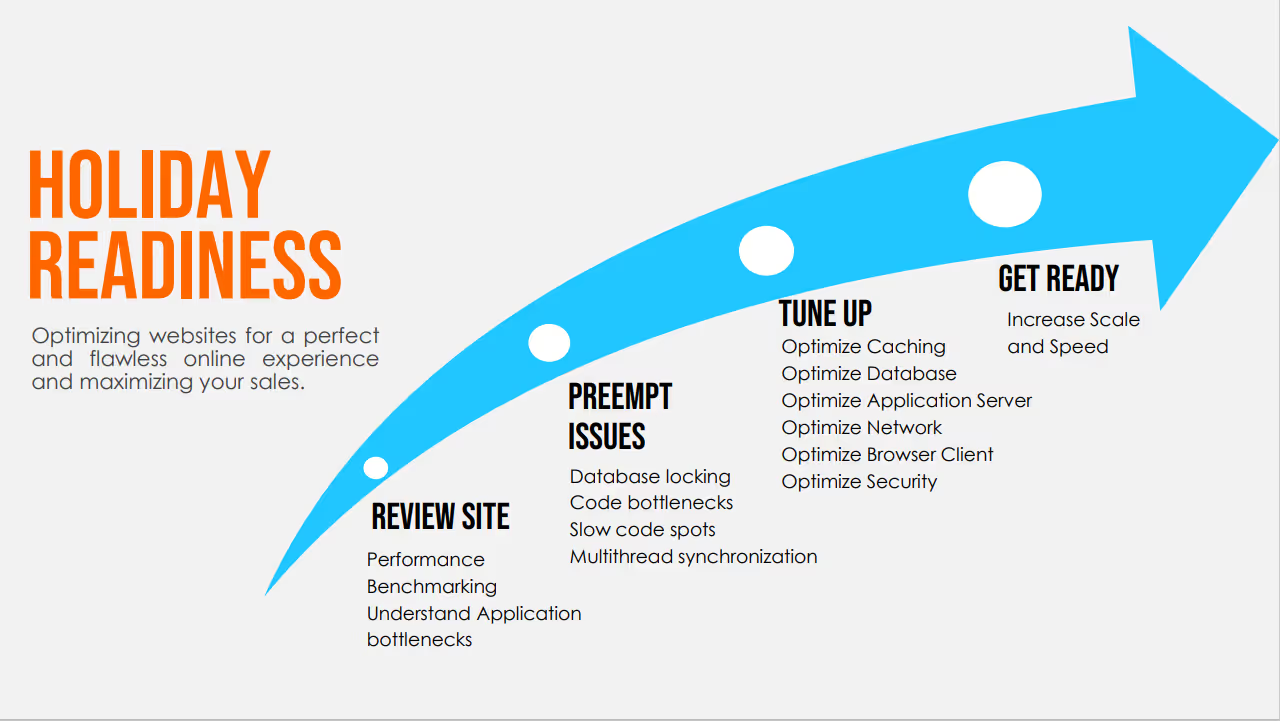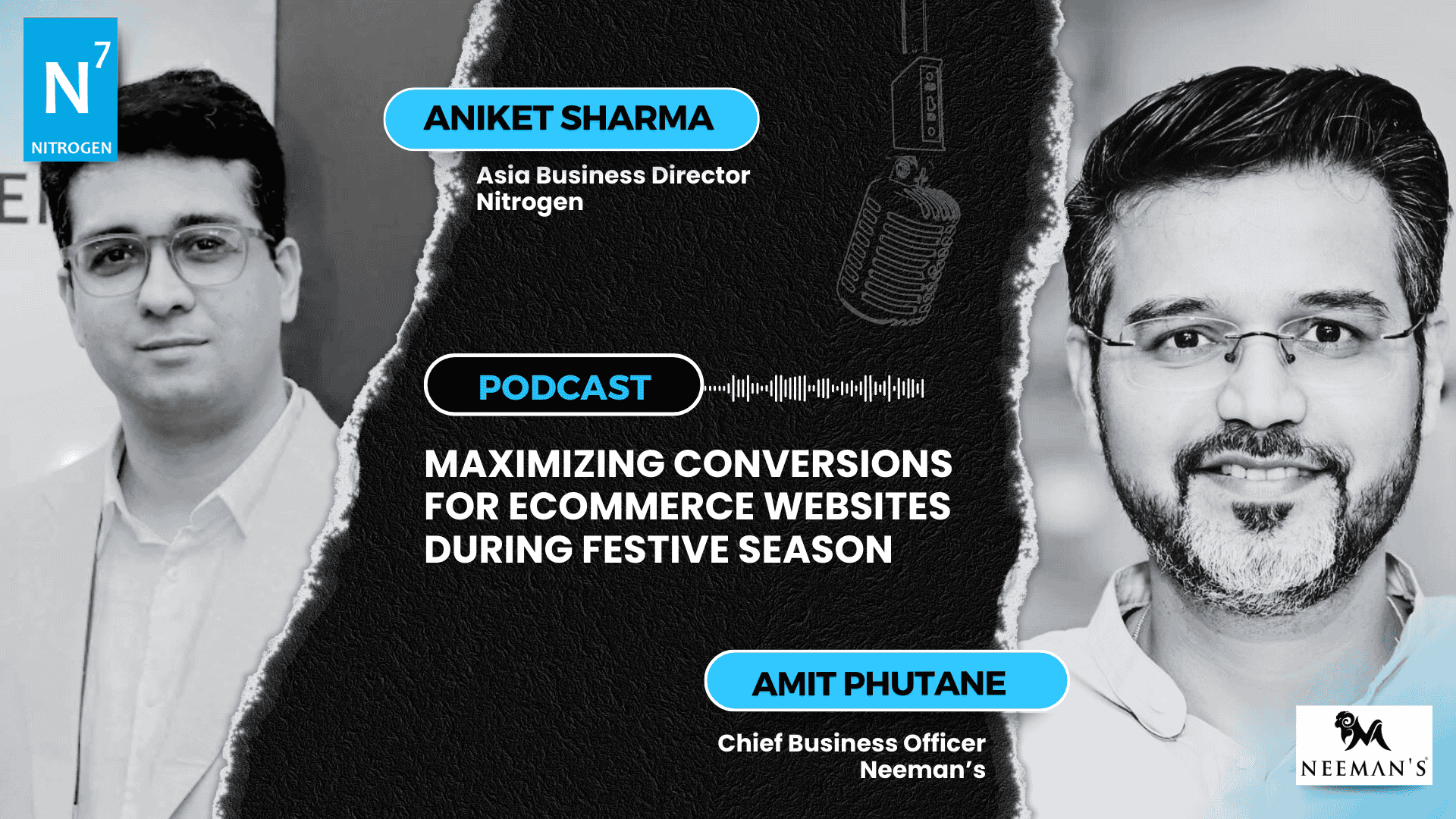Commerce Holiday Readiness Guide for 2022 | Tips & Strategies

Even though the holiday shopping might start in November and December, eCommerce stores have already begun preparing themselves for the Holiday Season. Last holiday season, Adobe Analytics reported that sales grew by a whopping 32% from 2019 to total $188.2 billion, two years' worth of growth in one year.
Retail's eCommerce share remains high, and so does its competition. Providing easy, flexible, and convenient options will make you your shoppers' favorite shopping destination. And now is a great time to get started and make your eCommerce website holiday season ready. Let's first see some of the eCommerce trends for Holiday Season 2022.
Trends for Holiday Season 2022
1. Consider Mobile-First Ecommerce:
Opportunities for mobile shopping or m-commerce are plentiful. Sales of retail m-commerce reached $359.32 billion in 2021, an increase of15.2% over the previous year. By 2025, these sales should more than double to reach $728.28 billion and account for 44.2% of retail e-commerce sales in the U.S., So users are most likely to prefer a mobile-friendly website for a better shopping experience.
2. Ecommerce landscape gets more competitive:
A recent study predicted that e-commerce would account for 20.4% of global retail sales by 2022, up from 10% five years ago. And then there are large players like Amazon and Alibaba. Cloud, commerce, and logistics capabilities backed by seamless, elegant shopping experiences can fend off these rivals as well as many others.
3. Rising threat from cyber attacks:
Companies have lost more than 20$billion in 2021 to eCommerce fraud. eCommerce websites are often targeted by DDoS attacks, automated bots that use stolen credit card numbers to complete transactions, and e-skimming attacks, which use malware to steal customers' personal information during checkout. The abandonment rate of shopping carts is already at 70% or higher, so retailers must strengthen their defenses without increasing customer friction.
4. Holiday purchases come early: According to Salesforce research, it is estimated that many consumers will start their Christmas and Thanksgiving shopping earlier in September to beat price hikes and tap on the huge discounts. So retailers must gear up their eCommerce websites for an early Holiday Shopping Season.
Also, recently because of the outage of a CDN player, many leading brands such as Canva, Quora and Discord experienced downtime, so you need to be prepared to serve your customers even during such outages with the right CDN approach.
This blog outlines strategies for overcoming the challenges of preparing ecommerce websites for major events, whether it’s a one-day super sale, or an entire holiday season. Here are 5 best practices for maximizing eCommerce success during the 2022 holiday season and beyond.
Steps for Preparing for the 2022 Holiday Season
1. Prepare for increased Holiday traffic
Last year some of the industry giants were caught off guard during the exceptionally heavy traffic seen during Black Friday and Cyber Monday. If websites can't handle the surge in traffic and transaction volumes that Cyber Weekend is known for, fickle customers won't hesitate to make their purchases elsewhere. One site's outage is another site's opportunity, and speedy sites get the sales. So, prepare your eCommerce website to prevent downtime and the associated financial and reputational harm.
The first step is to create a forecast of your capacity needs based on the growth of traffic and sales volumes over the last 3 to 5years. Then, depending on your projected peak traffic levels, execute load testing on both internal and external systems.
2. Prioritize customer’s mobile experience
43% of the Black Friday sales happened via smartphones in 2021, which is a 2% increase from 2020. To boost purchase confidence, beautiful product images and3D renderings, as well as robust product videos, can be used to stimulate interest and enhance visual commerce. Another critical factor is website performance. Test the site speed on different mobile devices to ensure your customers don't face any glitches in their shopping experience. Retailers should optimize the website performance for different device types and network bandwidth to enhance the customer experience. Take advantage of the advanced compression and caching capabilities of content delivery networks.
Predict pages likely to be viewed during the customer journey and proactively download those to the device. In addition to enhancing the buying experience and generating higher conversion rates, it drives brand loyalty and increases customer lifetime value. Thanks to Google's mobile-first indexing, your website's mobile performance affects where it appears in search results, including on desktops. Retailers should run performance tests to ensure that the visual content load speed is optimized.
3. Ensure you are protected against DDoS attacks & secure the website
Preparing for Distributed Denial-of-Service (DDoS) attacks from malicious actors that seek to flood your hosting server with traffic from compromised devices and networks as part of disaster-proofing your hosting infrastructure is essential. Asper reports, DDoS attacks jumped by 75% in Q4 2021 compared to the previous three months. In addition to guarding against DDoS attacks, you must secure your website against bot attacks and malicious intent traffic. The attack maybe made for various reasons, such as customer data theft, stealing confidential data, or damaging your brand image. Still, the holiday shoppers will blame you for a bad website experience.
Rate Limiting protects against unexpected traffic rates from malicious attacks like denial of service or brute force login attempts. Web scraping of data can also be controlled using this feature. Have an inbuilt web application firewall to secure your website against cyberattacks. WAF protects your website against vulnerabilities such as XSS, SQL injections etc. Also, it blocks illegitimate traffic to your website and only allows legitimate users to access it. WAF will also help you identify and get rid of bad bots. Bad bots make up nearly 40%of all traffic. These bots can steal important customer data and even affect site performance if left unchecked. When the WAF is coupled with a CDN, website performance is enhanced without compromising the website security.
4. Adopting the right CDN approach – Multi CDN
Several online platforms like Shopify, Discord, Acko and GitLab went down a few days back for users in a few countries as one of the CDN providers suffered an outage. CDN providers are vulnerable to outages, causing downtime for all website owners who rely solely on their services whenever these services experience a glitch. It may turn out to be costly for your business, thus disrupting business continuity, loss of revenue, lost productivity and loss in brand equity or trust.
This holiday season, you can plan for a multi-CDN approach. Multi-CDN approach can minimize points of failure by routing traffic over a different CDN as an alternate delivery option in case of an outage. There are many reasons to consider a multi-CDN strategy for your business, including -100% Site Uptime, global Performance enhancement, reduced risk, cost control, more flexibility and business continuity.
5. Application Performance Auditing & Tuning
Application can be audited during no-peak season like August and September and then tuned for performance optimization. You first need to review your current website and understand what the bottlenecks are. Make sure your website works in par or far better than your competitors. You can tune up and boost the website performance by optimizing caching, database, application server, network, browser client and security. And finally your website will be ready to tackle the huge incoming traffic during the holiday season.
6. Understand Real time User Experience by using tools like RUM
Use RUM tools to understand where performance bottlenecks in your delivery are. You can monitor what a user does on your website, how he behaves when browsing through your website, customer satisfaction and identify potential errors. These can be
- Geo related (Eg. Website works better in Philadelphia compared to Maine. Why so? Maine being your important market, ecommerce team in Maine needs to be informed about this issue.)
- Device related (Eg. Desktop user volume doesn't change during marketing events. Your team needs to figure out a way to market that channel)
- Bandwidth related (Eg. Low Bandwidth Mobile phone users have very bad page load times. This is serious as your main markets are rural, semi-urban regions, where bandwidth is low! Performance team needs to look into it.)
- Page related (Eg. On 12October,the Fashion page load was significantly higher at 13.5 secs than the actual average 6.1 secs. Can you please ask your team to investigate this?)
- Percentile User related (Eg. Average Page Load time is 6.3 seconds! But 75%tile is 8.3s and 95%tile is 15.9s. That's huge- lot of customers must be very unhappy.)
How can N7 and Nvizion Solutions help in ensuring your Ecommerce website is Holiday ready?
Nvizion always prepares you for the Holiday season by optimising your application to maximise sales and handle most concurrent users to place an order. We not only review the site but also preempt the issues, fine-tune the application and make it ready for the holiday. We understand the architecture and tune the commerce for your needs and requirements. Aligning the business strategy to your technology need is our motto. We will understand, evaluate the current technology stack, and provide the architecture which is not future-ready but is already compatible with your future needs with an incremental approach.
And adding to that our product, N7- The Nitrogen Platform is a new age AI/ ML powered performance disruptor. It uses features like
- Journey Optimization
- Predictive Caching
- JavaScript Acceleration
- DOM Optimization
- Device & Bandwidth Driven Image Optimization
- Human & BOT Detection
- RDx (Real Digital Experience)
This sets it apart from legacy CDN players and gives your user the digital experience you always wanted them to have.






.jpg)